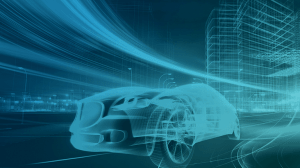The milling machine plays a very important role in the manufacturing industry. It can also be said as the backbone of the industry. It is competent to do any milling operation like the thread milling, gear milling, angular milling, and the list goes on. Before learning how to purchase a used milling machine, let us discuss the main parts, definition, operation and the types of milling machines. So, let’s get started.
What is a Milling Machine?
A milling machine is used to take off the workpiece metals with the aid of a whirling cutter known as the milling cutter. The rough, flat and irregular surfaces are machined in the milling machine and the work is done through revolving milling cutter by imparting the workpiece.
Parts of Milling Machine
The main parts of the milling machine are as follows.
- Column and Base
The column and the base are known to be the most important casting that braces all the other milling machine parts.
- The column comprises a pump and an oil reservoir which helps in lubricating the spindle.
- The base supports the column which contains a pump and a coolant reservoir. It is used at the time when the machine is being operated that demands the coolant.
- Knee
The knee is the casting that braces the table and the saddle. The knee encloses all the gearing mechanism.
- It is attached to the column like the dovetail ways.
- The elevating screw or the vertical positioning screw supports and adjusts the Knee.
- The elevating screw is required to make the Knee up and down by lowering or raising the lever with the help of power feed or hand.
- Swivel Table and Saddle
The saddle is found on the Knee which holds up the table. It glides on the Knee’s horizontal dovetail while the dovetail is paralleled to the spindle axis.
- The swivel table which is present only in the universal machines is fastened to the saddle that can be revolved horizontally in both the directions.
- Power Feed Mechanism
The Knee contains the Power Feed Mechanism. It is utilized to power the transverse – in and out, longitudinal – left and right and vertical –down and up feeds.
- To get the machines required feed rate, it is positioned by the food selection lever specified just like on the feed selection plates.
- In a few of the universal column and knee milling machine, the feed can be obtained by revolving the speed selection handle until the required feed rate is shown on the feed dial.
- Many milling machines have a fast traverse lever that can be attached when the speed in the transverse, longitudinal or vertical feeds needs to be increased. For instance, this can be used when the operator is aligning the work or positioning it.
- Table
It is a casting that shapes the rectangle and is adjacent to the saddle top.
- The purpose of the table is holding the working devices.
- It has many T-slots for work holding devices and holding the work like the fixtures and jigs.
- The operation of the table can be done either by power or hand. The table can be moved by hand by engaging and turning the longitudinal hand crank. To move the table by power, seize through longitudinal direction feed control lever.
- Spindle
The spindle is a shaft which drives and holds the tools for cutting in the milling machine.
- It is boarded on bearings while the column supports it.
- The electric motor is used to drive the Spindle through the gear trains. The gear trains can be found inside the column.
- The spindle face which lies on the table has machined an internal taper. The internal taper at the spindle’s front face allows only an arbor or tapered cutter holder. The front face has two keys that provide arbor or the cutter to drive.
- The jam nut and the drawbolt are utilized for securing the arbor and the holder in the spindle.
- Overhanging Arm/Over Arm
Overhanging Arm is a horizontal beam which can be found on the column’s top face. It can be a single casting that glides on the dovetail ways which is available on the column’s top face.
- It is used to fasten arbor support. It can have one or two bars of the cylinder that glides through the column holes.
- Arbor Support
It is a bearing casting that supports the arbor’s outer end. It helps in positioning the arbor’s outer end with the spindle.
- It prevents the vaulting of the arbor’s outer end during the process of cutting operation.
- The arbor has two types that support the milling machine.
- The oil reservoir is supported by the arbor. It can be secured on the overarm. The arbor support can be used only on the milling machines that are of horizontal types.
- Ram
The vertical machine has an overhanging arm which is known as the Ram. The column top supports one end’s ram and the other end is attached to the milling head.
- The ram can be shifted in and out with the help of a hand lever.
The milling machine can be divided into two types. They are the Vertical Milling Machine and the Horizontal Milling Machine. They can further be classified as
- Knee-type milling machine
- Ram-type milling machine
- Manufacturing or bed type milling machine and
- Planer-type milling machine.
The above machines mostly have a coolant system, self-electric driven motors, variable spindle speeds, and power-operated table feed.
So by now, you sure must have understood what and how the milling machine works. So if you want to buy one, check out the quick tips.
Used milling machine for sale
If you are planning to buy a used milling machine, make sure they are not too worn or used. It should be cleaned and lubricated and the spindle must spin smoothly. Look out for the screws that are unmarred and clean, any cracked castings or give a weird sound when you jiggle it hard.
If you notice any advertisements stating used CNC milling machine for sale, do not let go off the opportunity. Ensure to research get it at the right price. Auctions in the local industrialist and craigslist’s are a place where you can find good deals for milling machines.






